How UGC Can Transform Your eCommerce Success
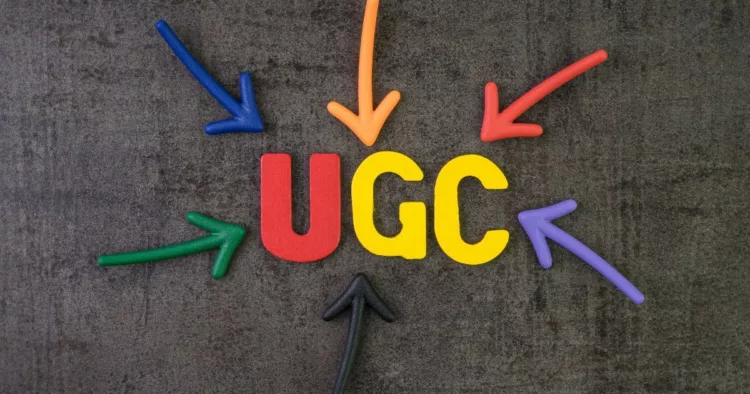
So, why pay for polished ads when your happiest customers are already creating content that sells for you? User-generated content (UGC) is transforming the way eCommerce businesses engage with customers and drive conversions.
Let’s explore how to turn authentic customer stories into your most powerful sales tool.
Even with rising popularity, eCommerce businesses still face challenges in getting and retaining customers.
High cart abandonment rate, low conversion rate, and lack of brand loyalty are some of the challenges eCommerce stores face. But there are some strategies you can use to boost your online store’s results.
Enter user-generated content (UGC).
Like word of mouth recommendations, UGC eCommerce helps boost brand loyalty and enhances conversion rate. In this article, you’ll learn how to gather and use UGC for eCommerce success.
But first:
What is user-generated content?
Also called consumer-generated content, user-generated content is any brand-specific content created and posted online by real customers. The content comes at no cost to the brand. The contributor is also not an official representative of the brand.
UGC can be visual content like images and videos, or written reviews and testimonials. It can be posted on social platforms or any other online channel. Around 85% of people say that UGC influences them more than a brand’s own content. This makes user-generated content an essential part of any brand’s marketing strategy.
Why is UGC important for eCommerce businesses?
UGC eCommerce is effective because its authentic content. In fact, 79% of consumers say consumer-generated content highly impacts their purchase decisions. So, UGC essentially helps increase conversion rates and sales.
It’s important to note that UGC is different from sponsored content. Sponsored content is what you get when a brand pays an influencer to use their products and post about their experience. This transactional agreement needs to be clearly disclosed to the audience, as shown in the example below.
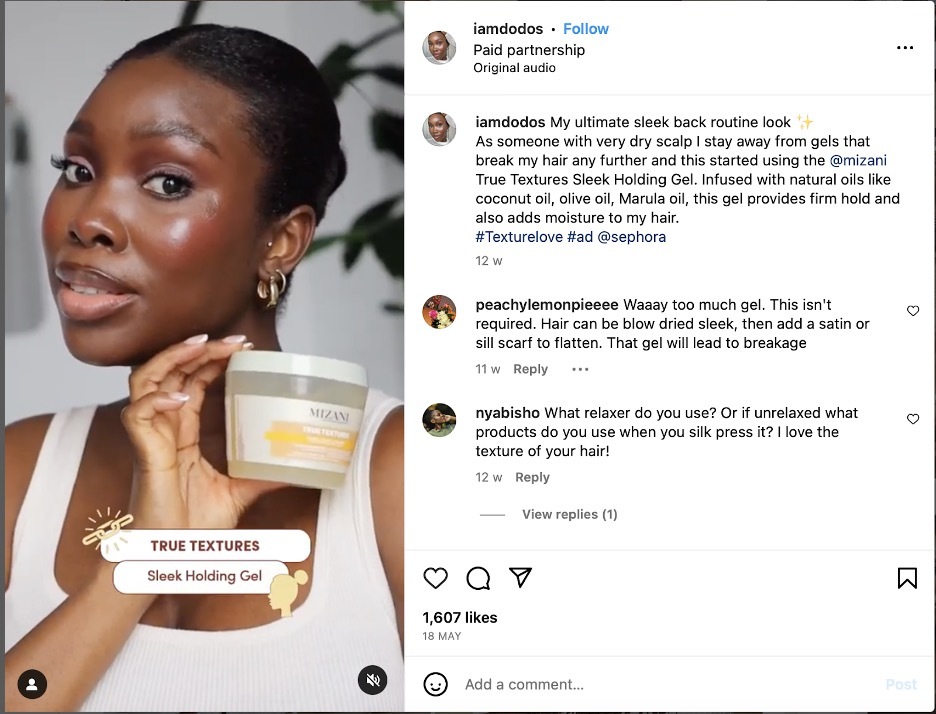
Another difference is this: UGC is shared by regular people while sponsored content is posted by pro content creators. Most brands partner with influencers with a large following to quickly reach their target audience. However, consumer-generated content is considered more credible because there are no incentives or strings attached.
With UGC for eCommerce, online stores can show the products they sell in action on social platforms and other channels. Customers get to see real-life use cases and how they can benefit from the products. This content is considered the new form of word-of-mouth recommendation. It is shareable, relatable, and, therefore, easy to go viral.
Top 4 benefits of using UGC to drive eCommerce sales
1. Builds trust and credibility
Potential buyers trust feedback from real customers more than brand-generated marketing messages. Displaying authentic customer experiences through reviews, photos, and videos can help reduce skepticism and build trust.
2. Boosts conversions with social proof
Seeing other customers enjoying your products can encourage potential buyers to make a purchase. Featuring UGC on product pages or your homepage can provide that final push to convert hesitant visitors.
3. Brings more loyal customers
UGC campaigns foster a sense of community around your brand. Customers feel valued when their content is featured, encouraging them to remain loyal and continue promoting your products.
4. Improves SEO and expands your reach
UGC can improve your online visibility. Customer reviews and testimonials often contain keywords that help enhance your search engine rankings. Plus, social media posts featuring your products can expand your reach to new audiences.
How to gather authentic user-generated content for your online store
There are strategies you can follow to collect and use UGC for your eCommerce store. Check out these four:
1. Collect reviews and testimonials via email
Email is one of the simplest ways to gather customer reviews. After a purchase, send a personalised email asking customers to share their experience.
Just make sure you personalise your email. When the message is personalised, emails have an average open rate of 18.8%.
Tips for successful review requests:
- Send the request 1-3 days after the product delivery.
- Personalise the email by addressing the customer by name and referencing their purchased product.
- Offer incentives such as loyalty points, discounts, or cashback to encourage reviews.
Pro Tip: Ensure your website is secure with an SSL certificate to reassure customers that their data is protected when leaving feedback.
The timing for these requests is key to success as well. If you offer products your buyers receive immediately (digital products, perhaps), you can send the review request right after the purchase. But if you’re selling physical products that require delivery, you have to wait until the buyer receives them.
Try these incentives to encourage customers to provide feedback
You can offer your email subscribers incentives for leaving these types of UGC. Here are some types of incentives you can offer:
Loyalty points - These work best when you want to grow a customer base loyal to your brand long-term. For example, customers can earn 10 points for every product review they send to you.
Discounts - Grant your customers X% off on their next purchase if they leave a review. This will also encourage them to make another purchase from your store.
Cashbacks - If you’re looking for a great response rate, cashbacks will work best for you. The more work it takes to create a review, the more the cashback incentive amount should be.
If you opt for this strategy, make sure, though, that you emphasise you’re merely incentivising the act of writing a review for you. In other words, it doesn’t matter whether these are positive reviews or negative ones. They’ll get their incentive anyway.
2. Run UGC campaigns on social media
Social media is a great platform for collecting UGC. Run campaigns that encourage customers to share photos or videos of your products in use.
Steps to launch a successful UGC campaign:
- Decide on the campaign theme and requirements.
- Offer several prizes to increase participation.
- Share the campaign details on your social channels.
- Create a unique branded hashtag to track submissions.
The next step is to share your campaign with your followers on social media. Here’s an example of a UGC campaign post from Bloomscape. It’s easy to understand. The instructions for joining are detailed, too:

Consider engaging influencers to get the word out about the campaign. Use email finder software to get the contact information of major creators. You can then reach out to them with personalised messages for collaboration opportunities.
You should also create a unique or branded hashtag for participants to use in the captions of their posts. This will boost your brand reach and engagement.
Once you have all that UGC coming, make sure you share some of that user-generated content on your own social media channels. See how Fossil does it:
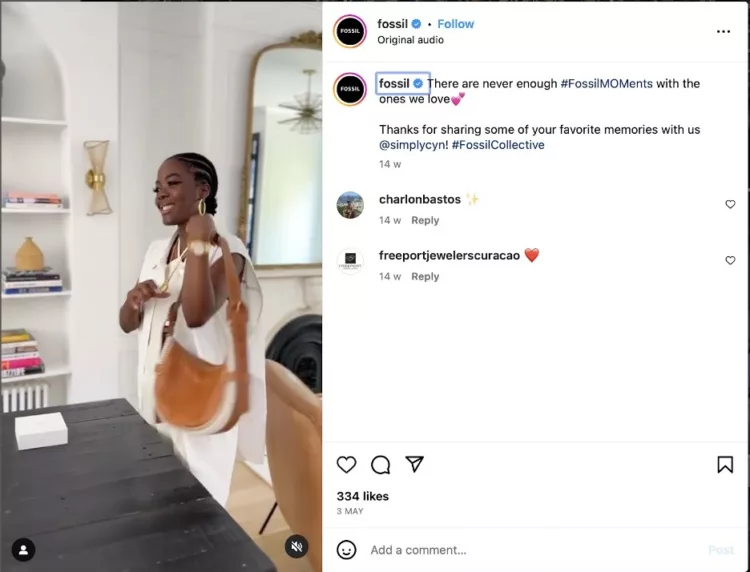
Just don’t forget to tag the original content creator and attribute the UGC to them. You don’t want to be accused of stealing other people’s work.
Don’t know how to write good captions? You can use generative AI tools like Ask Writer to help you. These tools can also help ensure the captions stay on-brand.
3. Display customer testimonials on your homepage
Customer testimonials are a powerful form of social proof. Showcase them prominently on your homepage to build trust with visitors.
Nine out of ten people say they trust what a customer says about a company more than what the company says itself. That means, you can convince even the most hesitant website visitor that your products are the real deal.
Thanks to this type of UGC in eCommerce, they stay longer on your website, and may even take your desired action. That action might include making a purchase.
Dollar Shave Club, for instance, displays its customer testimonials prominently on its homepage:
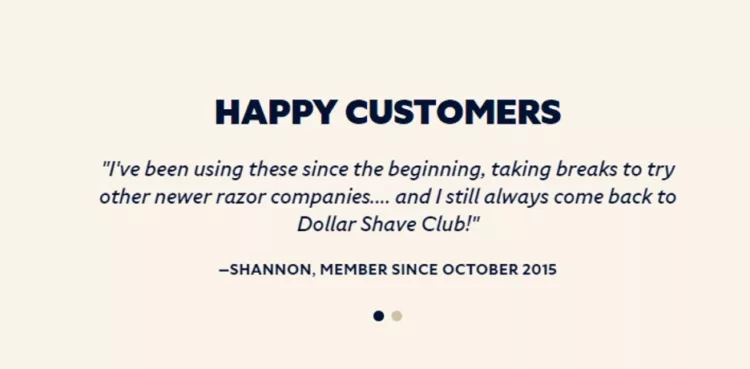
Want to make your testimonials look even more authentic? Why not include pictures that showcase how your products work as part of your user generated content in eCommerce?
Illuminate, an eCommerce company that sells motion-sensored lights, for instance, has pictures of their products when used in their customers’ spaces alongside written testimonials:
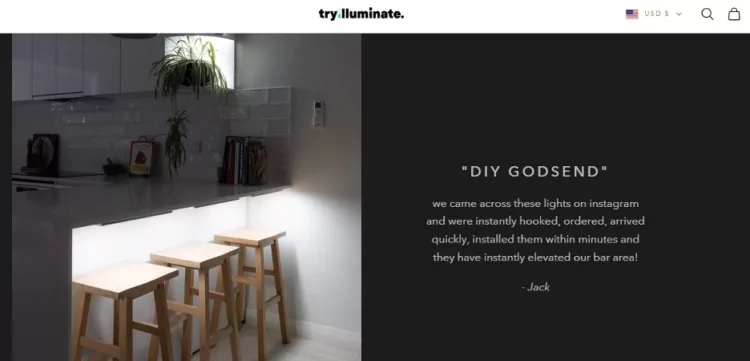
You don’t have to limit yourself to written testimonials when it comes to UGC in eCommerce. Video testimonials work exceptionally well, too. A whopping 79% of people watch video testimonials to learn more about a product or service. Of that figure, a staggering 77% say the video testimonials played a role in making them decide to make a purchase.
4. Feature social UGC or reviews in your product page
Your product page is probably the last page a potential buyer sees before making a purchase. So, don’t just include your product images there. Consider incorporating UGC, too. Who knows? It might even be the last nudge that person needs to take that final action of buying.
A social media aggregator tool like Pixlee, Taggbox, or Tint can help you add your favourite UGC posts to your product page. To get your written reviews, the easiest way is to just enable them on your site. If you decide to do this last one, make sure, though, that your product is really high-quality. Customers can leave negative reviews there, too, after all.
CLUSE, which sells everything from watches to backpacks, incorporates both reviews and UGC social media posts into its product pages.
Click on a product page, scroll down, and you’ll find the customer reviews first. The placement works because the reviews immediately address a common concern of any potential buyer: that the product isn’t really worth their money.
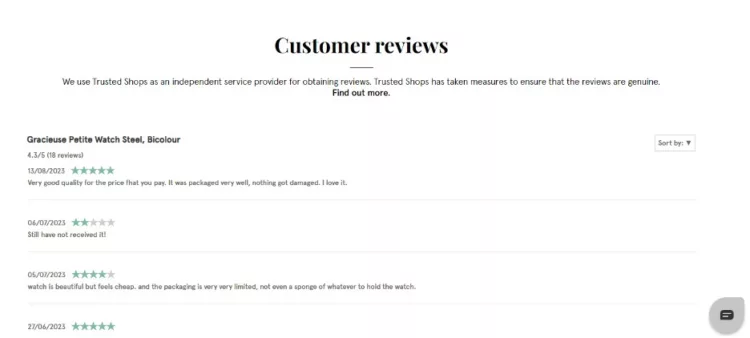
Scroll a bit more and you’ll find a beautiful gallery of customer photos. Site visitors can see the CLUSE product in action:

At this point, CLUSE tries to address a second buyer’s concern with the social media posts created by its loyal customers: that the product, while of excellent quality, won’t look good on them.
So, after seeing all that user generated content in eCommerce in the correct order, what does the visitor end up doing? They end up buying the product. Genius, right?
Quick tips to maximise the impact of UGC on eCommerce sales
- Use high-quality images and videos: Visual UGC is more engaging and shareable.
- Create a dedicated UGC section: Showcase user-generated content prominently on your website.
- Leverage social media stories: Share UGC in your Instagram or Facebook stories to reach a wider audience.
- Optimise UGC for SEO: Ensure that customer reviews and testimonials include relevant keywords to boost search rankings.
Final words
User-generated content, also called consumer-generated content, is any brand-specific content created and posted online by happy customers and other contributors. It comes at no cost to the brand.
To gather and use UGC for eCommerce, ask existing customers to give you reviews and testimonials via email. You can run UGC campaigns from time to time as well. Displaying customer testimonials on your homepage is an excellent idea, too. To leverage the power of social proof, why not include UGC social media posts or reviews in your product page?
With UGC in eCommerce, you won’t just boost your conversions and sales. You’ll make your customers feel appreciated and recognised. The result of all of this? eCommerce success!
Author Bio
David Campbell is a digital marketing specialist at Ramp Ventures. He helps manage the content marketing team at Right Inbox. When he's not working, he enjoys traveling and trying to learn Spanish.
Introducing Cosmos Release 1.0: Your Gateway to a New Era of Domain and Web Services Management
Price change for nine TLDs from 1st January 2024
Related articles:
